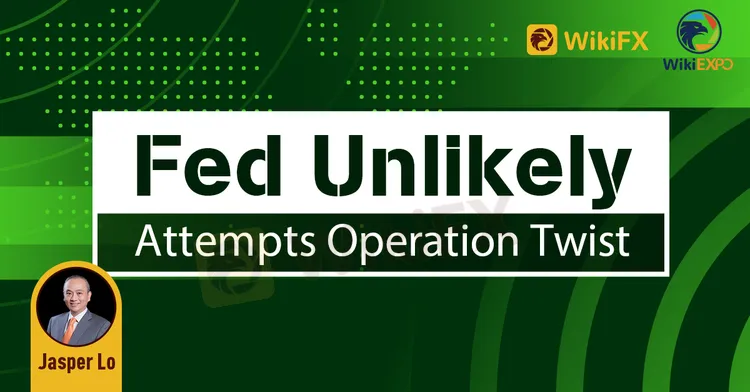简体中文
繁體中文
English
Pусский
日本語
ภาษาไทย
Tiếng Việt
Bahasa Indonesia
Español
हिन्दी
Filippiiniläinen
Français
Deutsch
Português
Türkçe
한국어
العربية
Fed Unlikely Attempts Operation Twist| Influencer‘s Insight •Jasper Lo
Abstract:Global long-term bond yields have been extending their gains, with the US 10-Year Treasury yield at one point hiking to 1.61%. As a result, global stock markets staged corrections to different degrees amid concerns over the Fed’s earlier tightening of monetary policy. The costs of financial institutions and corporate finance exploded in this case, hitting the economies struggling to recover.

Global long-term bond yields have been extending their gains, with the US 10-Year Treasury yield at one point hiking to 1.61%. As a result, global stock markets staged corrections to different degrees amid concerns over the Feds earlier tightening of monetary policy. The costs of financial institutions and corporate finance exploded in this case, hitting the economies struggling to recover.
Financial markets are betting on the Fed‘s intervention in the face of the soaring US 10-Year Treasury yield. They believe the bank won’t just sit by and watch the financial market and the economy adversely affected. Thus some analysts predicted that the Fed would soon launch Operation Twist (OT) to mitigate the pressure from the spiking long-term bond yields.

Operation Twist occurs whenever the Fed uses the proceeds of its sales from short-term Treasury bills to buy long-term Treasury notes. By buying long-term notes in bulk, it puts a premium on bond prices, pushing a fall in interest rates which reduces the cost of borrowing for businesses. At the same time, it takes off some pressure of tightening monetary policy on the Fed.
The last time the Fed attempted the OT was in September 2011, in response to the Eurozone debt crisis and the aftermath of the financial tsunami. At this stage, the bank is unlikely to launch a large twist because the current correction in the financial market is not deep enough.
In future trading, the 10-Year Treasury yield is expected to regain the upward momentum after temporary consolidation, with the high of 1.97% recorded in November 2019 the general target. The uptrend, however, will hamper the Japanese yen, Swiss franc, euro and gold, but boost the DXY, which has a great chance to stand at 91.60 or even above.

Disclaimer:
The views in this article only represent the author's personal views, and do not constitute investment advice on this platform. This platform does not guarantee the accuracy, completeness and timeliness of the information in the article, and will not be liable for any loss caused by the use of or reliance on the information in the article.
Read more

Key Forex Strategies
New to forex trading and looking for simple and effective trading strategies? We got you covered! In this quick guide, we'll explain some of the key forex strategies which are easy to digest. So, let's start!

Fundamental vs Technical Analysis
Fundamental and technical analysis play some of the most influential and critical roles in making trading decisions amongst traders today. They are widely accepted by stock, foreign exchange, indices and cryptocurrency traders worldwide. Traders use either or both of the methods to make key trading decisions in their respective markets.

Going Short of JPY Is Boosted by Yellen’s Remark on Interest-Rate Hikes Again
When interviewed by Bloomberg, Yellen, the U.S. Treasury Secretary, indicated that the USD 4-trillion budget released by Biden would be beneficial to America even if it may increase inflation and interest rates.

Brent oil is predicted of bullish repricing by Goldman Sach
According to Goldman Sachs' head of energy research, a nuclear deal between the U.S. and Iran could send energy prices higher - even if it means more supply in the oil markets. Talks are ongoing in Vienna between Iran and the six world powers - the U.S., China, Russia, France, U.K., and Germany - trying to salvage the 2015 landmark deal. Officials say there's been progress, but the conclusion of the negotiations remains unclear and oil prices have been soaring as a result.
WikiFX Broker
Latest News
Germany's Election: Immigration, Economy & Political Tensions Take Centre Stage
WikiFX Review: Is IVY Markets Reliable?
IG 2025 Most Comprehensive Review
ED Exposed US Warned Crypto Scam ”Bit Connect”
Top Profitable Forex Trading Strategies for New Traders
EXNESS 2025 Most Comprehensive Review
Currency Calculator






